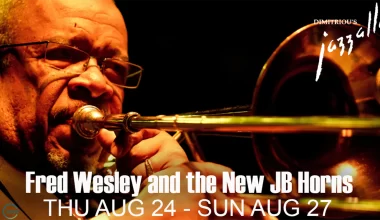Have you ever noticed that some songs seem to pop up on your streaming service’s playlists more than others? You may have also noticed that many of these songs tend to sound very similar, from the use of certain vocal effects to the repetition of certain chord progressions or song structures. Well, it’s not a coincidence. Many of the top music producers in the business are tailoring their music to game the streaming service algorithms, and it’s having some pretty negative effects on the music industry.
But first, let’s talk about the algorithms. Music streaming service algorithms work by analyzing a variety of different factors to determine what music is most likely to be enjoyed by listeners. This includes data such as how often a song is streamed, how many times it’s added to a user’s playlist, and how long listeners tend to listen to it. That’s not all, though. The streaming service algorithms can get very detailed and track things like the time of day a song is streamed, the location of the listener, and the devices they use to listen. They can even analyze the audio characteristics of a song, such as its tempo, key, and energy level, to determine how it should be categorized and recommended. With so much data being analyzed, it’s no wonder that some producers are tailoring their music to try to game the algorithms and get more streams.
It’s truly staggering to consider the sheer power of these algorithms. As reported by Rolling Stone magazine, a report from analytics firm Alpha Data in 2020 found that just 1% of Spotify’s artists were responsible for over 90% of all streams. Even more astonishingly, the top 10% of artists accounted for 99.4% of the streams! This means that a whopping 90% of the artists on Spotify generated a mere 0.6% of the plays. That’s barely over half of one percent! Many of the songs from those underplayed artists may be equally good, if not better, and more artistically driven than some of the algorithm-recommended songs that are receiving all the attention.
Now, back to the music producers. It takes significant resources to analyze algorithmic data, which means that it’s usually the music producers backed by major record labels who can afford to invest in this kind of in-depth analysis. As a result, many of these producers are now using this analytical advantage to focus on creating songs that are designed to perform well on streaming service algorithms. They might prioritize catchy choruses or repetitive beats over artistic expression or musical experimentation. Some producers even use data analysis to identify the most popular keywords and themes in music, and then create songs around those themes in order to maximize their chances of being recommended on streaming services.
The mainstream music industry is becoming increasingly algorithm-focused, and this trend has resulted in some pretty negative effects across the industry as a whole. One of the major consequences of this trend is the lack of diversity in the songs that get recommended to listeners. If every producer is trying to make the same kind of catchy, repetitive music that’s optimized for streaming algorithms, then listeners might miss out on some of the more interesting and innovative music that’s out there. Talented artists who don’t fit the algorithmic mold might struggle to get their music noticed and could potentially lose out on opportunities to build their careers. Moreover, algorithm-focused music production can discourage experimentation and creativity, leading to a situation where the same songs and sounds are churned out again and again, stifling musical growth and innovation.
Furthermore, the pressure to create algorithm-friendly music can also lead to a situation where artists’ creative wishes are overridden by producers who are more concerned with pleasing the streaming algorithms than with creating meaningful and innovative music. In some cases, artists might even be forced to change their style or sound in order to appeal to a wider audience and gain more streams. This can be incredibly disheartening for musicians who are passionate about their craft and who want to create music that is true to their vision.
When music production is driven primarily by algorithms and data analysis, artistic integrity and creative freedom can take a back seat. As a result, many musicians working with algorithm-obsessed producers are finding it harder to make music that they are proud of, and that truly reflects who they are as artists. This can have a demoralizing effect on the entire creative process, as artists may feel that they are no longer in control of their own work.
So, when using music streaming services, be aware of the potential downsides of relying too heavily on their algorithms to discover music. While they can certainly introduce us to some great new artists, they are also very likely to lead us down a path of only listening to the most popular, algorithm-friendly songs.
If we want to support a diverse range of musicians and help promote innovation in the industry, we should actively seek out new music and explore different genres and artists. Give independent and local artists a listen, too. By doing so, we can help support artists who prioritize creativity and expression, rather than just those trying to game the system.
The music world is vast and there are countless talented artists out there waiting to be discovered – so don’t be afraid to step out of your comfort zone and try something new. Who knows, you might just find your next favorite band or singer!

